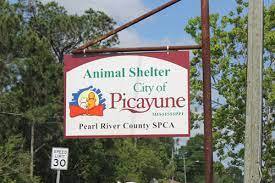Study: Expect more uninsured motorists by 2010
Published 11:59 pm Thursday, January 22, 2009
A study released Wednesday by an independent property-casualty insurance research group says the recession will likely trigger a sharp increase in uninsured motorists on U.S. roads by 2010.
The Malvern, Pa.-based Insurance Research Council released its latest uninsured motorists study with data showing New Mexico and Mississippi leading the nation in 2007. More than one in every four motorists in those two states hit the road without insurance.
The five states with the highest uninsured driver estimates were New Mexico (29 percent), Mississippi (28 percent), Alabama (26 percent), Oklahoma (24 percent) and Florida (23 percent).
The five states with the lowest uninsured driver estimates were Massachusetts (1 percent), Maine (4 percent), North Dakota (5 percent), New York (5 percent) and Vermont (6 percent).
The study found a strong correlation between the percentage of uninsured motorists and the unemployment rate. Based on current national unemployment rate projections, the study says, the percentage of uninsured motorists is expected to rise from 13.8 percent in 2007 to 16.1 in 2010.
“An increase in the number of uninsured motorists is an unfortunate consequence of the economic downturn and illustrates how virtually everyone is affected by recent economic developments,” said Elizabeth A. Sprinkel, senior vice president of the IRC, in a news release.
The five states with the highest unemployment rates were Michigan, Rhode Island, South Carolina, California and Oregon. All ranked higher than New Mexico and Mississippi in unemployment in November 2008, the latest statistics available. But David Corum, a spokesman for the IRC, cautioned against comparing data from state to state.
“We looked at countrywide trends in unemployment and countrywide trends in uninsured motorists. We didn’t look at how states with different unemployment rates vary,” Corum said.
“But I think most people would conclude as economic conditions worsen, unemployment grows, and those people directly effected have to make some tough choices and unfortunately some of them may decide to go uninsured.”
An increase in the national unemployment rate of 1 percentage point is associated with an increase in the uninsured motorist rate of more than three-quarters of a percentage point, according to the study.
The study also did not look at state auto insurance laws, Corum said, “because some states have them but don’t enforce them and other states have what appear to be weak ones, but enforce them very vigorously.”
The IRC examined data collected from nine insurers, representing approximately 50 percent of the nation’s auto insurance market. The study contains recent statistics by state on uninsured motorists claim frequency, bodily injury liability claim frequency and the ratio of uninsured motorists to bodily injury claim frequencies. It also estimates the percentage of uninsured drivers nationally and by state from 2005 to 2007.
A rise in the uninsured could mean increased premiums for insured drivers.
“Most people who are insured have uninsured motorists coverage and that protects them in the event they are hit by someone who doesn’t have insurance,” Corum said. “So obviously, that does increase the cost of insurance for those who are insured.”
On the Net:
Insurance Research Council: www.ircweb.org.



